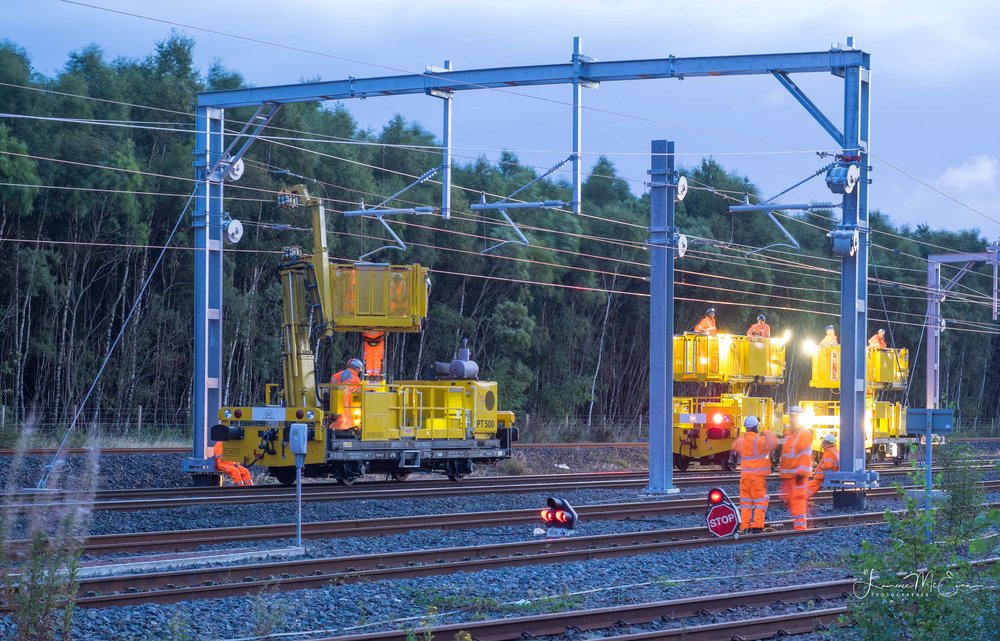
ENGINEERS working on the £140 million enhancement of the East Kilbride to Glasgow railway line have reached a significant milestone in the project.
Network Rail and contractors SPL Powerlines, Story, AmcoGiffen, Siemens, Rail Systems Alliance Scotland, and QTS are delivering the project as part of a wider Scottish Government investment to decarbonise railway passenger services.
The project team undertook works across the route between July 19 and 22 whilst the line was closed. The closure allowed for the remaining steel pile foundations to be installed between Busby and Thornliebank as part of the electrification of the railway.
Overhead line steelwork was installed over a viaduct near Busby with track side cabinets and more than 60m of cabling that power signalling equipment being relocated to the new Hairmyres Railway Station.
Ahead of these works starting, the project also completed the installation of 24 steel foundations that will support the new footbridge and lifts at Hairmyres
Three more days of continuous works are planned for the last weekend in September (28-30). This is to allow the demolition of bridges at Thornliebank Road and Westerton Crescent near Busby station.
Stephen McCall, Network Rail senior programme manager, said, “I would like to thank passengers and residents for their patience and understanding as we delivered these vital engineering works.
“Having an extended period on the railway allowed the enhancement project to take a significant step forward, as we’ve been able to deliver some elements more quickly.
“At the end of September, we have another opportunity to work continuously to deliver another major part of the project.
“Thornliebank Road bridge represents the largest civils structure we’re replacing on the route. To ensure efficiencies in terms of delivery, we’ll also remove the footbridge near Busby station at the same time. We’ll be updating the community and passengers in advance of this work starting.
“The project is now at a stage where people can really start to see the transformation of the railway environment, which ultimately will provide a more sustainable and reliable mode of travel for passengers.”











